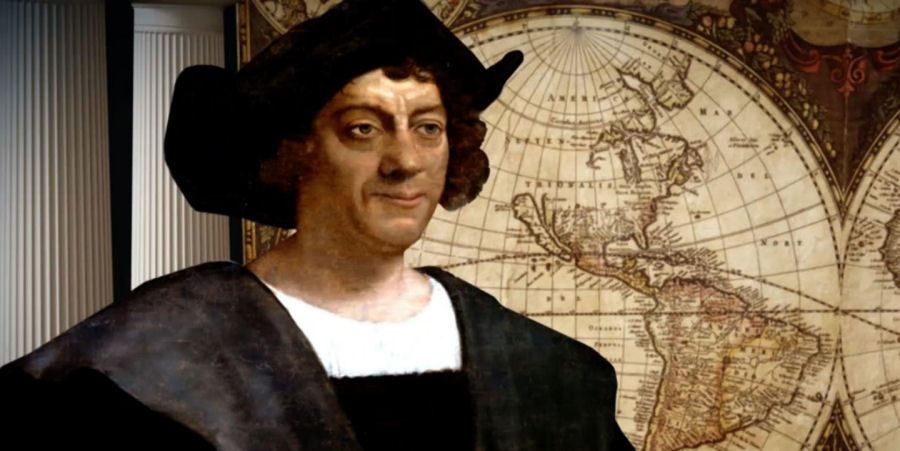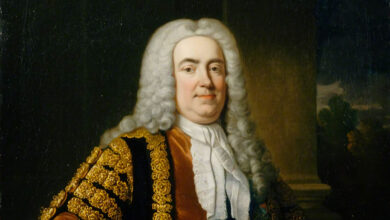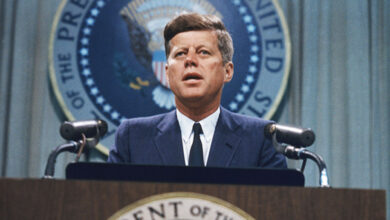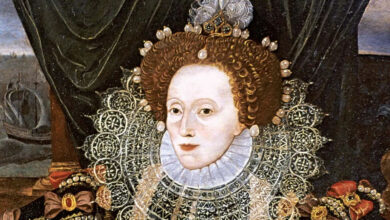
Podcast: Play in new window | Download
Subscribe: Spotify | Amazon Music | Youtube Music | RSS
Don Cristobal Colon, otherwise known to us by the name Christopher Columbus was a pivotal historical figure and one whose legacy continues to be a matter of contention and debate over 500 years after his death. Born sometime in the year 1451, Christopher Columbus’s early life is largely unknown although some historians agree that he was most likely born in the Republic of Genoa in what is modern-day Italy.
However, despite his fairly obscure origins, it is known that from a young age he travelled widely, as far as the British Isles, and according to some reports even as far north as Iceland. During this period, he also travelled as far south as Africa to what is now Ghana.
As far as is known, Christopher Columbus had no formal education and appears to have been largely self-taught. Despite this, the fields of history, geography, and astronomy would feature heavily in his future career as an explorer and navigator.
Since the Portuguese had gained a tight hold on the spice trade route to the East Indies via Africa, Columbus began to develop a plan to reach the East Indies by travelling west instead of East. Columbus, just like everyone else at the time, had no idea that there was any land in between and simply believed that an open ocean voyage travelling west would allow Spain to bypass their trade rival, Portugal.
After many years of lobbying, Queen Isabella and King Ferdinand of Spain finally agreed to put money down and support a small exploratory voyage by Columbus.
Christopher Columbus departed Spain in August 1492 with three ships, the Santa Maria, the Santa Clara (nicknamed the Nina) and the Pinta (this ship’s nickname is all that is known, with its full name being lost to history) and made landfall in the New World on 12 October, a date now referred to as Columbus Day.
Although the exact location reached on that date is unknown, it was likely somewhere in the Bahamas.
Columbus was by no means the first to discover the American continent, as many indigenous natives had been living there for millennia, nor was he even the first European as research has shown that the Vikings most likely found their way into Greenland and Canada.
However, Christopher Columbus can be credited with bringing the first detailed reports back to a receptive Europe and the promise of new lands for exploitation, colonization, farming, and of course, the acquisition of resources. A mere 3 months voyage by sail made for a very alluring prospect.
Columbus helped establish a colony in what is now Haiti, and this was the first time Europeans had made any attempt at a settlement so far West since the Vikings had attempted colonization almost 500 years earlier.
Columbus made three additional voyages in 1493, explored part of the coast of South America in 1498, and the coast of Central America in 1502. It is not known though to what extent Columbus was aware that this landmass was an entirely new continent rather than being a part of Asia. A good piece of evidence that Columbus thought he was in Asia was the fact that he named the indigenous people Indians due to the mistaken belief that they were a people of Southeast Asia.
Despite these dubious navigation issues and assumptions, one thing that was certain was that Christopher Columbus opened up what became known as the Columbian exchange, a significant period in human history where the resources and cultures of the Americas and Europe began to meet, intermingle, and exchange resources with each other.
South America provided Europe with a variety of new foods such as Cocoa beans which led to the development of chocolate and fruits which had never been seen before in the Old World, such as pineapple, avocado, and papaya, whilst the people of the Americas were the recipients of things such as horses, cattle, and other animal stock that had been domesticated in Europe centuries before.
Although a successful navigator, Columbus was a less than successful governor of the new colony and was eventually replaced. Christopher Columbus returned to Spain in 1504 and lived out the rest of his life comfortably well off but frustrated that he never received the official recognition that he felt he deserved, even writing a book called Book of Privileges in which he detailed what he believed the Spanish Crown owed him and his heirs.
On 20 May 1506, at around the age of 54, Columbus died from what many believe to be Reiter’s syndrome, now called reactive arthritis. He had requested that his body be buried in the Americas but as no church existed there at the time his wishes could not be accommodated. He was originally buried in Valladolid before being moved three years later to a monastery on a river island near Seville called La Caruja. Almost thirty years later in 1537, the widow of one of Christopher Columbus’ sons Diego sent his bones to along with those of her husband to Santo Domingo, which is the capital of the Dominican Republic.
In 1795, Spain relinquished control of Hispaniola, the island in the Caribbean that consists of the sovereign nations of Haiti and the Dominican Republic. Believing that the remains of Christopher Columbus should not fall into the hands of the French, Spain moved them, first to Cuba and then back to Seville, Spain in 1898 where they have remained ever since.
However, it was not the repeated movement of his remains that would be Christopher Columbus’ largest legacy, but rather the debate throughout history of the impact of what he did and how he did it.
It was not only the exchange of material wealth and animals, technologies, and ideas that occurred as a part of his settlement of the Americas but also the unfortunate transmission of diseases. The arrival of Christopher Columbus in the New World heralded the swift and sudden collapse of many of the American civilizations due to war and colonization, but especially due to a lack of immunity to Old World diseases.
Many inhabitants of the Americas would perish over the centuries following the arrival of Columbus partly due to the exchange that was occurring between the Americas and Europe. Christopher Columbus’s personal reputation was also marred by his use and exploitation of slave labour. Although slavery had already existed in the Americas for centuries, the use of exploitative labour by a supposedly enlightened Renaissance individual strikes a sour note with modern scholars and individuals. Despite this, Christopher Columbus continues to be one of history’s most pivotal characters and notable explorers and his contentious legacy will likely continue to be studied and taught for centuries to come.
Podcast: Play in new window | Download
Subscribe: Spotify | Amazon Music | Youtube Music | RSS




